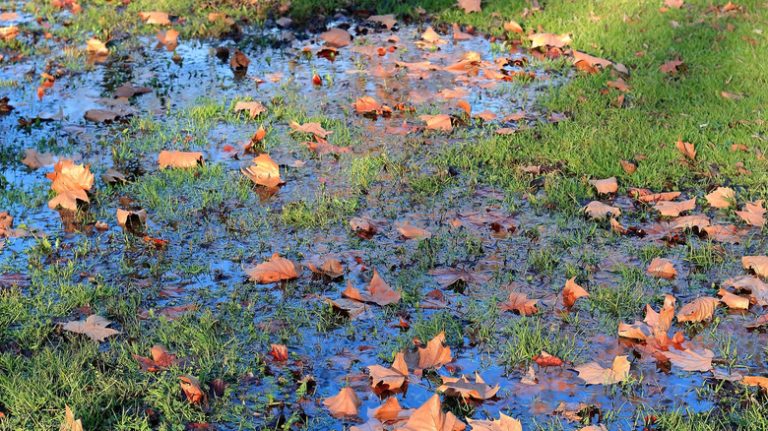If you’re looking to add a splash of color to your garden, consider growing Eastern Redbud trees. These flowering trees heat up your landscape with their stunning pinkish, reddish-brown, or lavender blooms before the leaves emerge. They are native to the eastern regions of the United States and can grow in a wide variety of soils, making them a versatile choice for many gardeners.
Eastern Redbuds tend to grow in zones 4 to 9 and can reach a height of about 20 to 30 feet. They have a wide spreading growth habit, with branches that tend to form a low, wide crown. The heart-shaped leaves of Eastern Redbuds change color throughout the year, starting with a ruby red in spring, then turning a deep green for summer, and finally transforming into a brilliant golden hue in the fall before they drop.
These trees are known for their showy floral display. In early spring, clusters of small pinkish flowers cover the branches, creating a cloud of color that is sure to catch your eye. This annual show is a real spectacle and is sometimes celebrated with a redbud festival in certain states.
Eastern Redbuds are relatively easy to grow, but they do have certain requirements. They prefer well-drained soil and should be planted in an area that receives full sun or partial shade. These trees are also susceptible to drought, so regular watering is important, especially during times of heat and rising temperatures. It’s also recommended to mulch around the base of the tree to help retain moisture.
The roots of Eastern Redbuds are known to spread wide rather than deep. This shallow rooting system should be taken into consideration when planting them in your garden, as they can compete with other nearby plants for water and nutrients. Some gardeners choose to plant them as specimen trees or in larger open areas to avoid these issues.
Eastern Redbud trees provide year-round interest in gardens and landscaping. After the leaves have fallen in winter, the reddish-brown branches still add a touch of color to the landscape. The silver-gray bark of older trees creates a nice contrast against the winter backdrop.
So if you’re looking for a native tree that is easy to grow and adds a splash of color to your landscape, consider the Eastern Redbud. These trees are sure to become the sweetheart of your garden with their brilliant flowers, unique branching patterns, and heart-shaped leaves. Follow our guide and see your garden transform into a vibrant, colorful haven!
How to Grow Weeping Redbud Trees
Weeping redbud trees, a type of eastern redbud (Cercis canadensis), are a beautiful addition to any landscape. They are known for their graceful weeping branches covered in a stunning display of pink or white flowers. If you want to grow a weeping redbud tree, here’s a guide on how to do it.
Soil: Weeping redbud trees prefer well-draining soil. It’s better to choose loamy soil that is slightly acidic. If your soil is heavy and clayey, you can improve it by adding organic matter like compost or peat moss.
Planting: When planting a weeping redbud tree, make sure to choose a sunny location. The sight should have enough space to accommodate the tree’s root system and provide room for its weeping form. Dig a hole that is twice the width of the root ball and slightly shallower than the depth of the root ball. Place the tree in the hole, backfill with soil, and water thoroughly.
Watering: During the first year, it is important to water the weeping redbud tree regularly, especially during dry periods. After the first year, the tree is more drought-tolerant and will require less watering.
Flowering: Weeping redbud trees produce their vibrant flowers in early spring before the foliage appears. Most commonly, the flowers are pink, although there is a variety called “Alba” that produces white flowers. The flowering period usually lasts for a few weeks, creating a stunning display in your garden.
Growth: Weeping redbud trees are slower growing compared to their upright counterparts. They typically reach a height of 10 to 20 feet, with a similar spread. The weeping branches give the tree a unique and attractive form.
Care: Weeping redbud trees are generally easy to care for. They are heat and cold tolerant, but they perform best in USDA hardiness zones 5 to 9. Prune the tree in late winter to remove any dead or crossing branches and maintain its desired shape.
Cultivars: There are several weeping redbud cultivars available in the market, offering variations in flower color and foliage. Some popular cultivars include “Merlot” with reddish-brown foliage and “Appalachian Red” with lavender-pink flowers. Choose a cultivar that appeals to you and fits well with your landscape design.
Weeping redbud trees are native to the eastern United States and are sometimes referred to as the “pansy tree” because of their colorful flowers. They are widely grown in residential gardens and can be seen in parks and other public places. Some areas even have redbud festivals where these beautiful trees play a central role.
In conclusion, weeping redbud trees are a beautiful and unique addition to any garden. With proper care and maintenance, they can thrive and provide a stunning display of color in the spring. Consider adding a weeping redbud tree to your landscape and enjoy its beauty for years to come.
Weeping Redbud Tree Care
Weeping redbud trees, also known as Cercis cultivars, are a popular choice for landscaping in residential areas. These ornamental trees are loved for their beautiful weeping branches, which add a unique touch to any garden or backyard.
When it comes to growing weeping redbuds, they are relatively easy to care for. They are widely adaptable to various soil types, ranging from acidic to alkaline. Weeping redbuds thrive in both full sun and partial shade, making them a versatile choice for different areas of your garden.
One of the reasons why weeping redbud trees are so beloved is their stunning appearance. In the spring, these trees burst into bloom, displaying brilliant pinkish-purple flowers that cover their weeping branches. The heart-shaped leaves follow, giving the tree a lush and vibrant look throughout the growing season. In the fall, the foliage changes to gold or slightly silver, adding a touch of warmth and color to your landscape.
The weeping redbud tree can reach a height of up to 20 feet at maturity, with a wide spread that can vary from 10 to 20 feet. Their size makes them a great choice as a specimen tree or as a focal point in your garden. They also work well when planted in groups or used as a backdrop for other smaller plants.
When it comes to caring for weeping redbud trees, proper watering is key. These trees prefer well-drained soil and should be watered regularly, particularly during dry spells. Applying a layer of mulch around the base of the tree can help retain moisture and regulate the soil temperature.
Weeping redbud trees are generally hardy and can handle a wide range of climates. They are known to be quite tolerant of heat and are suitable for growing in zones 4 to 9 according to the USDA hardiness zones. However, it’s important to note that different cultivars may have specific environmental requirements, so it’s best to check the specific needs for the variety you choose to plant.
In addition to their beautiful appearance, weeping redbud trees are also loved for their low maintenance requirements. Pruning should be kept to a minimum, as these trees tend to have a natural weeping form. However, light pruning may be necessary to remove any dead or damaged branches.
If you’re planning to add a weeping redbud tree to your garden, make sure to choose a location that provides adequate space for the tree to grow. These trees can be a striking focal point in your landscape, and their weeping branches will add a touch of elegance and beauty to your outdoor space.
Guide to Growing Eastern Redbud Trees
The Eastern Redbud tree, scientifically known as Cercis canadensis, is a smaller, ornamental tree that is native to eastern North America. It is widely grown for its beautiful lavender-pink flowers that bloom in early spring before its heart-shaped leaves emerge. The leaves of the Eastern Redbud tree turn a brilliant yellow color in the fall before falling off.
The Eastern Redbud tree is easy to grow and is adaptable to a wide range of soil conditions. It prefers well-drained soil and can tolerate both sun and partial shade. It is also tolerant of drought and is generally low-maintenance.
There are many reasons to consider planting an Eastern Redbud tree in your residential garden. Its showy flowers and colorful foliage make it a beautiful addition to any landscape. It also provides a great habitat and food source for birds and butterflies.
When planting an Eastern Redbud tree, it is important to choose the right variety for your specific needs. There are several different cultivars available, including dwarf varieties and those with purple-leafed foliage. The size and shape of the Eastern Redbud tree can vary from a small shrub-like form to a larger tree with a wide spreading canopy.
Eastern Redbud trees can be planted in the spring or fall. They should be planted in a hole that is wide and shallow, rather than deep, to encourage the growth of surface roots. It is also recommended to add mulch around the base of the tree to help retain moisture and suppress weed growth.
Eastern Redbud trees are generally pest and disease resistant. However, they can be susceptible to root rot if planted in poorly drained soil. It is also important to avoid planting them in areas with high wind exposure, as the delicate branches can be easily damaged.
The Eastern Redbud tree is a true native beauty that has been introduced and widely planted for its aesthetic appeal. Its unique form, attractive flowers, and colorful foliage make it an excellent choice for any garden or landscaping project.
REASONS TO LOVE THEM
- Eastern redbuds, or Cercis canadensis, are beautiful flowering trees that are native to the eastern part of the United States.
- They have been widely planted and are loved for their ability to attract pollinators and provide a burst of color in the spring.
- The Eastern redbud was introduced to the USDA market in 2005, and is now a popular addition to many gardens and landscapes.
- One reason to love Eastern redbuds is their stunning lavender-pink flowers that bloom in early spring, making them a true sight to behold.
- The heart-shaped leaves of the Eastern redbud are another reason to adore these trees, especially when they turn golden in the fall.
- Eastern redbuds are also easy to grow, tolerating a wide variety of soils and growing well in both full sun and partial shade.
- They can reach a height of up to 30 feet and tend to form a rounded, vase-like shape as they mature.
- One of the most popular cultivars of Eastern redbud is the ‘Forest Pansy’, known for its dark purple-leafed foliage.
- During springtime, many towns and cities host Eastern redbud festivals to celebrate the beauty and diversity of these trees.
- Eastern redbuds are also loved for their ability to attract a variety of wildlife, including birds, butterflies, and bees.
- In addition to their beautiful flowers and foliage, Eastern redbuds produce seed pods that add interest to the tree’s structure.
- Some cultivars, like the ‘Flame’ redbud, can even produce brilliant red and purple fall foliage.
- Eastern redbuds are adaptable to a wide range of climates, and can be found growing in zones 4 to 9.
- The Eastern redbud is not only loved in the United States but also around the world, with varieties growing in places like Texas and Canada.
- Whether you are looking to add color to your garden or simply appreciate the beauty of nature, Eastern redbuds are sure to please.




